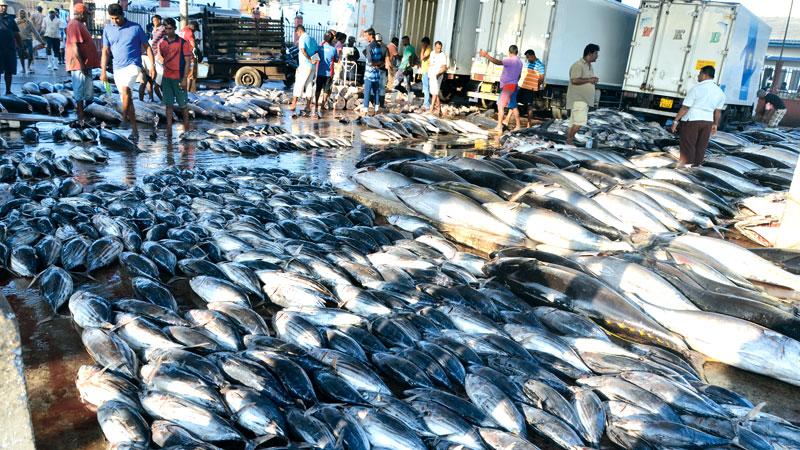
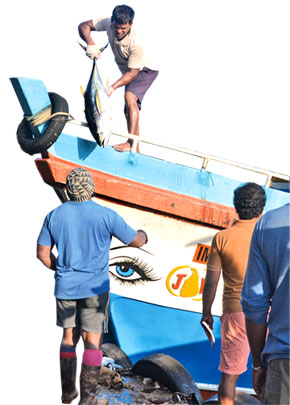
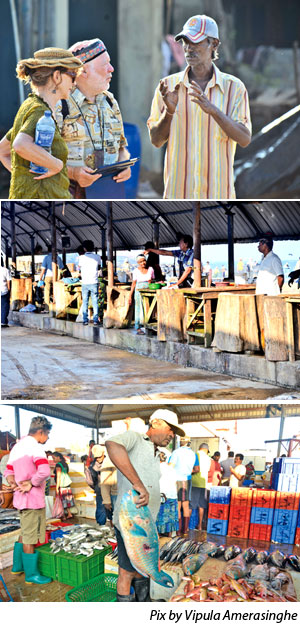 The vibrant fish auction has fascinated me for many years. It is a place where a diverse range of men gather for a few hours as one fraternity. Fishing is a lifestyle, and not a mere job. The sea is a challenging frontier laden with risk and adventure. In order to capture the thrills and spills of this daily auction we set off at 5.20 am from Lake House, in earnest anticipation. From the Negombo town, a predominantly Catholic area we are directed to the beach. It is about 6.40 am and the boats have not come in yet.
The vibrant fish auction has fascinated me for many years. It is a place where a diverse range of men gather for a few hours as one fraternity. Fishing is a lifestyle, and not a mere job. The sea is a challenging frontier laden with risk and adventure. In order to capture the thrills and spills of this daily auction we set off at 5.20 am from Lake House, in earnest anticipation. From the Negombo town, a predominantly Catholic area we are directed to the beach. It is about 6.40 am and the boats have not come in yet.
We come across Roshan, a young and robust man. He is already using his hands to take jardi (fish immersed in salted brine) and dry it on a long plastic sheet.
The smell of the salted fish is overpowering, but I greet him with a smile. He tells me that he learnt this from his father. The fish is cleaned and gutted at the beach. A 180 kg barrel is filled with water and 40 Kg of salt mixed in.
The fish are then arranged, while crows hover around expectantly. The fish must be cured in 2 days and then dried. Women are also seen checking the condition of the jardi, already spread to dry. An old man, teeth stained with betel, eyes us with curiosity.
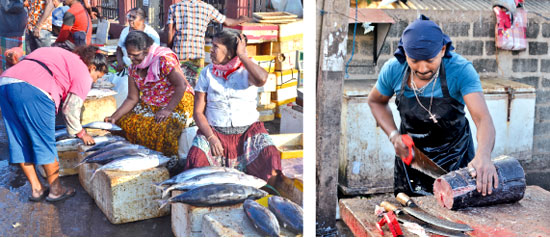
By 7.15 am we head back to the main fish auction. This is a seafood paradise. The fragrance of fresh fish permeates the air. I was rather surprised to see many tourists, mainly Chinese taking photos. We chat to some vendors and brokers (middlemen). Some grin, some stare and some are talking on smart phones. One is taking a selfie!!
A multi- day trawler has just come alongside the small pier. Four men jump into action and begin unloading sapparu and kenda fish. These fish weigh between 35 to 45 Kg. They are the relished fish that are sent overseas and fetch the highest price. A fat man, the unofficial soul presiding at the auction offers me a smile, which was a clear indication to stand and watch, but not talk! This worthy, in a calm voice , note book in hand proclaimed the prices in a
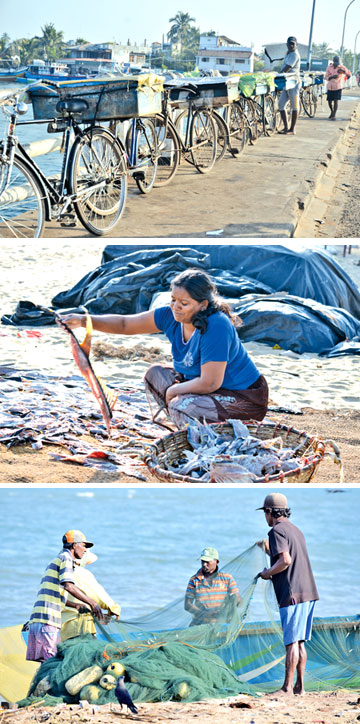
tone, which only the fisherman could decipher, as they nodded in agreement.
We talked to the crew of a trawler, who had been out at sea for 30 days. They tell me they load the boat with 8,000 liters of fuel. Provisions are taken for cooking, including fresh drinking water. Life on board is routine, except for the weather which changes, unpredictably.
On an average, the voyage costs Rs 12-15 lakhs, and the profit yielded in at times is almost Rs 20 lakhs. Yet, there are some months when the target is not achieved. I observe a lovely fish in shades of green and blue- giraw mallu, which is quite rare.
The man tells me it makes a delightful side dish for local arrack! As we walk around the market there is an assortment of crabs, prawns and cuttle fish. Iranganie, a well nourished, plump woman points out that the ‘Kadol kakuluwa” (lagoon crab) must be cooked while it is alive to get the best taste. This would prove a challenge to the women of the city, I wonder. I noticed some cardboard boxes.
The label reads, product of Thailand, and reveals fish. I ask the men, how come, this is in the market, and one says, it supplements their sales during some days. I reckon that we being an island nation should get our own supply of fish, but then there are some challenges.
Walking along the small bridge, we notice some old anglers standing in quiet apprehension. Some fat cats are seated nearby with a lesser degree of anticipation. The aroma of steaming tea and lavaria (string hoppers filled with caramelized coconut) drifts from a small kiosk. More trawlers are coming into the pier. The fish market is operating at peak capacity today. It seems that all present are satisfied. The fish auction of Negombo is unique. It is a celebration of life.
